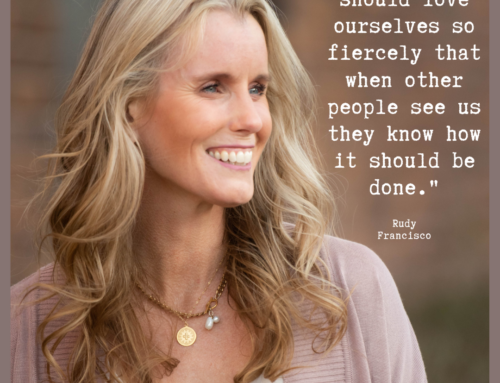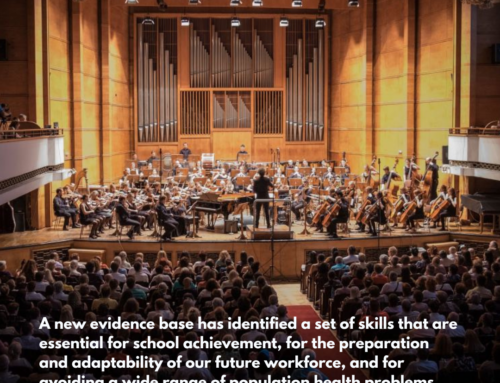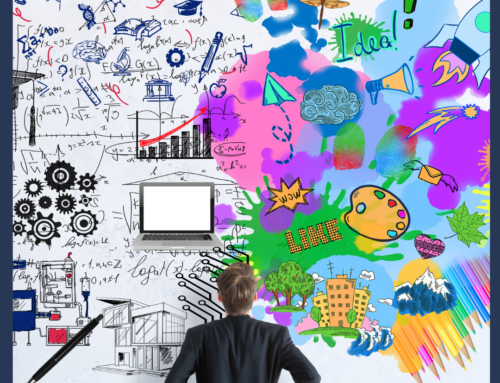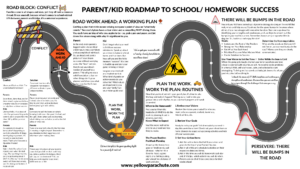Last weekend my sweet and beautiful rescue dog Allie was the roughest, meanest dog at the dog park. She instigated scuffles, chased with teeth bared, sprang, jumped, and growled her way through canine interactions. Uffdah. We had to bypass playdates with our favorite dog park buddies because she just couldn’t play nice; one fellow even shouted at me, “Control your dog!!!” (with a couple more carefully crafted words) as I stood with her E-collar “beeper” remote in my hand, poised to use it. Thanks for the hot-second to think, sir.
How deeply discouraging it was that an activity my furry bud and I both ever-so-muchly look forward to took such an unlucky turn. I hurried head-down through the snow, keeping Allie moving to make sure she didn’t snip-snap at anyone else. When we returned to the car I sighed, feeling alone and exhausted. But then I turned on the heat and some good music, hugged my grumpy fur baby, and left the angry words and hurt feelings in the snow banks where they belong. I think she did too. We gave our best that day.
Now, reflecting on my sixty minutes of anxiety, the feelings bring me back to years with my littles. I remember the shame I’d felt if we were the aggressors or the whiny ones when playdates went awry or when we were the tired or inflexible party. I’d replayed those moments over and over and felt rejected for both of us. Too many super-human expectations piled up too snow-bank high. Am I the only one who did this? Expected more of myself and my kids than I should have? And why, oh why, didn’t I ever drop the super-capes and give us room to have a bad day?
Back then, instead of falling with grace, I plain old fell. On my face, every time. And whew, folks, it hurt. And I bet it hurt my kids. That’s the part that stings the most. And I pray about it to this day. Can any of you relate? I spent quite a bit of my kids’ toddlerhood bruised by my own perfectionist-driven blows. And our collective mom/kid best was somehow never quite good enough.
“Not good enough.” Was the the soundtrack I played to every. Single. Interaction. What kind of music would you line up with this one? The saddest song ever played. Because if we don’t think we’re enough, we never will be. It’s locked deep and dark in the heart, chained, and guarded by insidious gremlins of self-hate. Oh the boat that I missed on that one! Thanks, Lord, for turning it back around for me.
The catalysts for this life-amplifying change? Ann Voskamp’s staggering, heart-healing words (that pained, imperfect, and somehow towering woman in The Broken Way is who I pray to be and how I pray to think), and a frightening health diagnosis helped me realize that I have too much to accomplish in too little time. I can’t spend that time filled with shame or placing blame.
Do you know kind, beautiful, smart, amazing, compassionate humans who play the “Not good enough” tune? What must we do to break the cycle? If this is your current ballad, please. Please. Start a change now. Young people: I want you to have what I didn’t. Contemporaries: If I can do it, you can too.
I believe there are a few ways we can start. First: Brain science. Knowledge, facts, understanding leading to awareness. Mindfulness. Language and tools to communicate and support one another. Here goes:
Our brains are hard-wired to make connections. They crave connections and receive rewards in the form of a dopamine (the same chemical responsible for that fuzzy feeling when you eat tasty food or exercise) when we make them. We rely on these neural connections for learning new things. They help us remember not to touch a hot stove, to slow down when we come to stop signs, and to practice our strategies for theACT. All fantastic things!
The flip side? Sometimes, quite often in fact, we make really, really poor, made-up connections—“conspiracy theories”—because in the absence of data, we will always make up stories. Remember our post on teacher-student misunderstanding and all the stuff that gets in the way
Neurologist and novelist Robert Burton explains the conspiracy theory process in a way that reminds me of The Habit Loop: Our brain recognizes a familiar beginning, middle, and end pattern (brains do so love these) and rewards us with dopamine for sorting through the ambiguity. Remember: Cue—>behavior—>reward. Our stories are sorted to have good guys and bad guys; a binary code to clear up who’s right and who’s wrong.
And then these stories, though based on limited data and plenty of made-up stuff, begin to form coherent, emotionally satisfying versions of reality. In other words, fear fills in our knowledge gaps. The less we know, the more space fear has to grow. Conspiracy theory captures the essence of what I now try extremely hard to not do: connect dots that don’t exist to make false sense of my experiences. My familiar go-to explanation for social discomfort? “I’m not good enough.” What’s yours?
One more term we should all be aware of in understanding our ability to self-deceive: confabulations. Besides rolling off the tongue in a dramatic and sublime way, confabulations capture this: the telling of a lie told honestly. Wow. If that doesn’t stop you in your tracks!? To confabulate is to replace missing information with something false that we believe to be true. Folks, we do this to one another and to ourselves Every. Single. Day.
The story I could have made up yesterday is that our dog friends think Allie is terrible and no longer want to play with us. That everyone at the dog park will avoid, “That horrible brown dog with the big teeth and her owner who is horrible too,” and in fact, that is why we haven’t seen certain friends in a while. The guy that yelled at me was right to do that because I’m a clueless dog owner and I should never ever go back to the dog park.
Wait, what? Hey, at least I recognized my brain had taken this story taken off for Canada without a map.
In all honesty, I did begin telling myself parts of this story. But I stopped. Because I knew they weren’t true. One snapshot does not tell your whole story. Ever. I’d felt my brain begin to race. I’d felt my pulse quicken and my stomach flutter. These were signs that my thoughts were about to take a quick road trip up North. Because it’s what brains and bodies are wired to do: make connections to self-protect. Stay safe. Avoid the tiger. Avoid hurt. Avoid pain.
Do you see the huge, important, unifying connection? We are all so incredibly special, individual, and wonderful. And we’re united in brain science. We’re different in the best ways, and the same in the best ways. And we can support ourselves and one another if and when we start to conspiracy theorize and confabulate. We have the collective power to recognize when our thoughts are about to bolt and stop the car before it leaves the garage. Science and love working together: a grace-infused combination.
By the way, I had a most glorious walk with Allie at the dog park today. 🙂
-Cara







